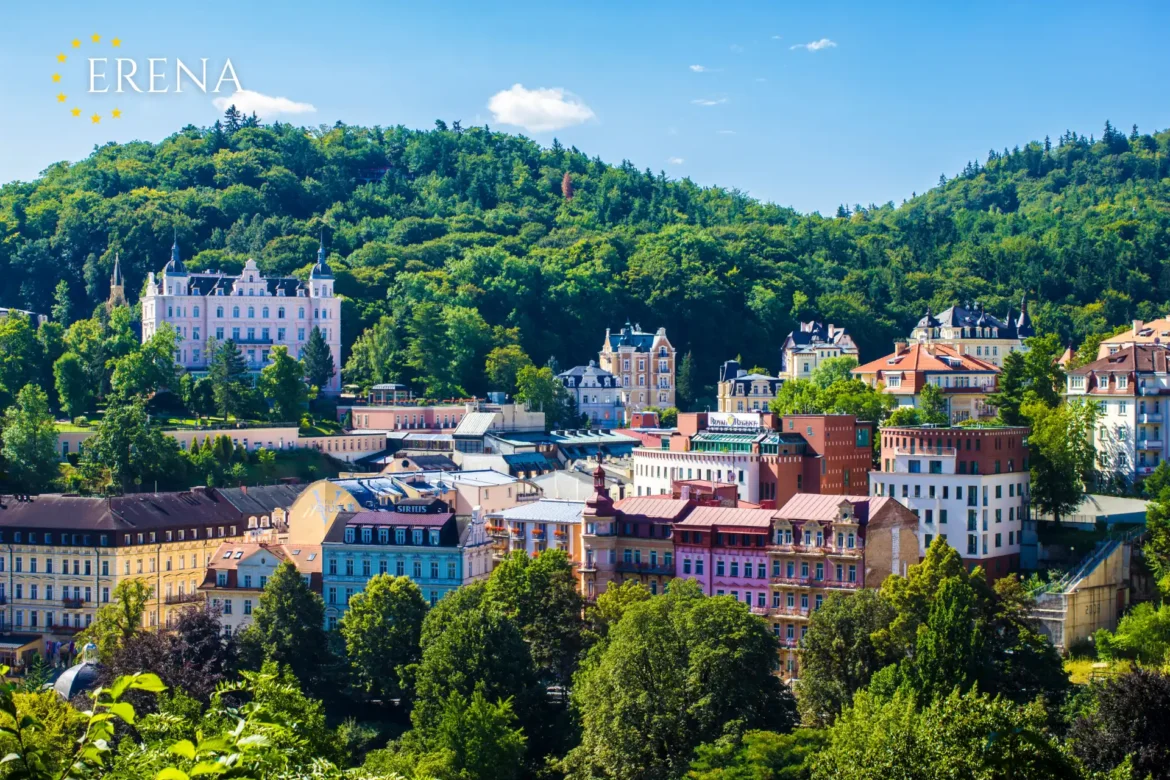Karlovy Vary, one of the most famous spa towns in the Czech Republic, has long attracted tourists from around the globe. Known for its therapeutic mineral springs, stunning architecture, and tranquil atmosphere, the city has built a reputation as a premier wellness destination. However, recent events, particularly the war in Ukraine, have significantly altered the dynamics of tourist flows. These changes have impacted the city’s economy, tourism infrastructure, and local businesses. Let’s delve into how the situation in Karlovy Vary has evolved since 2022 and how the city is adapting to new realities.
Traditional Tourist Demographics in Karlovy Vary
Before the start of the war in Ukraine, Karlovy Vary was especially popular among tourists from Russia and other CIS countries. Russian tourists constituted a significant portion of visitors, as the spa town was historically associated with Russian culture. Many hotels, restaurants, and shops offered services in Russian, making the experience particularly comfortable for Russian-speaking guests.
In addition to Russian tourists, Karlovy Vary also attracted visitors from Germany, Austria, Poland, and other European countries. German tourists, in particular, appreciated the city’s convenient location, rich history, and high-quality wellness treatments based on local mineral springs.
The Impact of the War in Ukraine on Tourism
The onset of the war in Ukraine led to a sharp decline in the number of Russian tourists visiting Karlovy Vary. The key reasons behind this shift include:
1. Sanctions and Visa Restrictions: Sanctions against Russia and stricter EU visa policies for Russian citizens have made traveling to Europe significantly more challenging.
2. Economic Downturn in Russia: The depreciation of the ruble and economic difficulties have reduced the number of Russians who can afford international travel.
3. Political Tensions: The war has altered perceptions of Russian-speaking tourists in some European countries, influencing their choice of travel destinations.
As a result, Karlovy Vary lost a substantial portion of its traditional clientele, affecting the revenue streams of the local tourism industry.
New Groups of Tourists
Amid the decline in Russian visitors, new groups of tourists have emerged in Karlovy Vary. These include:
1. European Tourists: Visitors from Germany, Poland, Slovakia, and other neighboring countries have increased their presence in the city. Europeans appreciate the unique wellness treatments and the city’s peaceful atmosphere.
2. Ukrainians: Many Ukrainians, displaced by the war, have temporarily relocated to the Czech Republic. Some visit Karlovy Vary as tourists, while others seek temporary accommodation. This has created a new segment of customers for local businesses.
3. Asian Tourists: Following the easing of COVID-19 restrictions, tourists from Asia, particularly South Korea, China, and Japan, have begun returning. For many, Karlovy Vary is now part of cultural and wellness tours across Europe.
Changes in Tourism Infrastructure
The reduction in Russian-speaking tourists has forced businesses in Karlovy Vary to adapt. Many companies that previously catered to Russian guests have adjusted their services to meet the needs of new visitor demographics. Key changes include:
1. Expansion of Language Support: While Russian was previously the primary foreign language, businesses now focus on German, English, and Ukrainian.
2. Revised Service Offerings: Restaurants and shops are updating their menus and product selections to better meet the preferences of European and Asian visitors.
3. New Marketing Strategies: Tourism agencies and hotels are increasingly promoting Karlovy Vary to markets in Germany, Poland, France, and other Western European countries.
Economic Consequences
The decline in Russian tourists has had a negative impact on the revenue of local businesses. This has been particularly evident in hotels, restaurants, and wellness centers that traditionally catered to Russian-speaking clientele. However, some of these losses have been offset by an increase in visitors from other countries.
City authorities and tourism industry representatives are actively working to attract new categories of tourists. Investments in infrastructure, marketing, and the creation of new tourist routes have been key strategies. For example, eco-tourism and wellness tourism are being promoted as ways to appeal to European and Asian audiences.
Benefits for New Visitors
Karlovy Vary offers numerous advantages for tourists from diverse backgrounds. These include not only its unique mineral springs and therapeutic treatments but also its rich cultural heritage. Annual international events such as the Karlovy Vary International Film Festival continue to attract global attention.
Additionally, the city’s location near the German border makes it convenient for short trips. For European tourists, Karlovy Vary serves as an ideal destination for relaxation and rejuvenation.
Long-Term Prospects
Despite current challenges, Karlovy Vary remains one of Europe’s premier spa towns. The loss of a significant portion of Russian tourists has served as a catalyst for adaptation and modernization within the city’s tourism industry. In the long term, these changes could strengthen Karlovy Vary’s position on the global stage.
The city continues to focus on improving infrastructure, expanding its international appeal, and creating conditions to attract tourists from a wider range of countries. Investments in marketing and an emphasis on eco-tourism and cultural tourism will help Karlovy Vary maintain its popularity and diversify its revenue sources.
The war in Ukraine has significantly altered the structure of tourist flows in Karlovy Vary. The decline in the number of Russian tourists has posed a serious challenge to the local economy, but the increase in visitors from other countries has partially compensated for these losses. The city is actively adapting to the new reality, focusing on tourists from Europe, Asia, and Ukraine.
Karlovy Vary continues to attract visitors with its unique atmosphere, cultural wealth, and wellness opportunities. These strengths, combined with ongoing efforts to modernize infrastructure, will help the spa town overcome current difficulties and achieve new levels of development.
Tourist Flow in Karlovy Vary: Changes After the Start of the War in Ukraine
588

